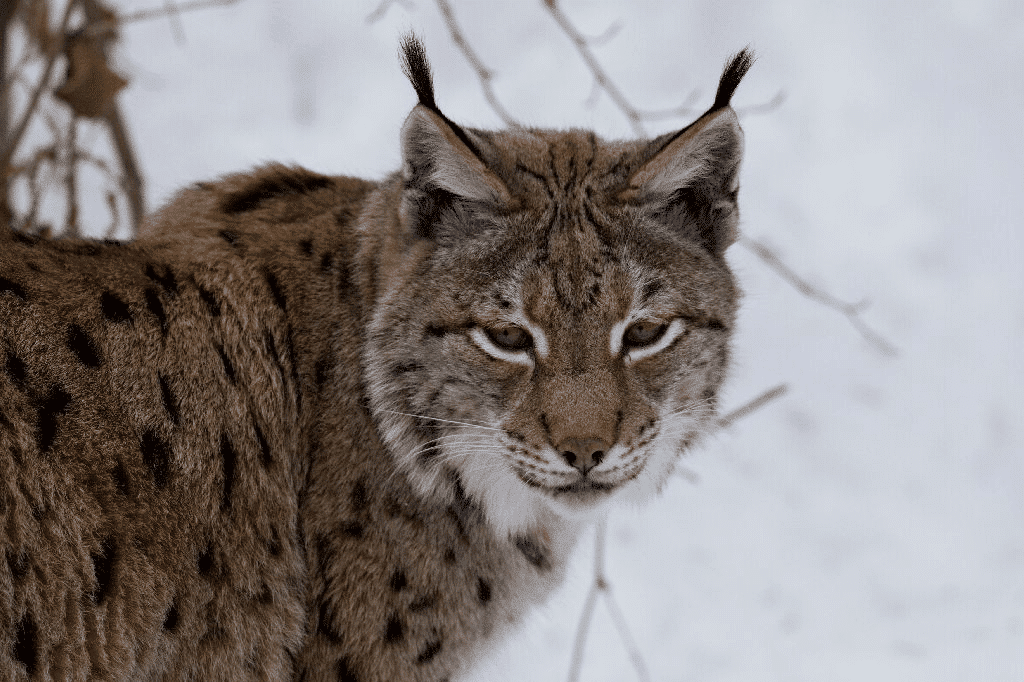The Eurasian lynx (Lynx lynx) is Europe’s largest wild cat.

Its body length ranges from 70 to 120 cm, its short, seemingly severed tail measures up to 25 cm, and its wither height is 50 to 70 cm. On the average, the animal weighs about 20 kg, with the females always smaller.
Signature characteristics of all lynxes are triangular black ears with black tufts of hair on their ends, and a black tip of the tail; many adults have their facial hair long enough to form whiskers.
The lynx’s large paws with retractile claws act like snowshoes. During the winter, the fur on their paws gets thicker, increasing their area and allowing the lynx to move better in the snow.
Tracks of the lynx are usually round, slightly asymmetrical, without paw impressions. The animal only extends its paws in exceptional cases, for instance, when hunting or moving on a slippery surface. Its colouration varies – the farther north the lynx lives, the brighter is its fur in order to provide camouflage in a snow-covered landscape.
3LYNX Project
Why was the project started?
We can increase the number of lynxes if we use the correct approach.
Protecting the lynx is difficult. For a long time, the lynx had been a highly treasured trophy and it was considered an undesired animal in the forests. Decrease in the numbers of this species has already caused significant losses, financial as well as cultural and ethical. We now try to reverse this negative trend through small, but also large interventions. We are facing a challenge when trying to connect monitoring, protection, and solving of conflicts, primarily in cooperation with huntsmen and forest wardens.